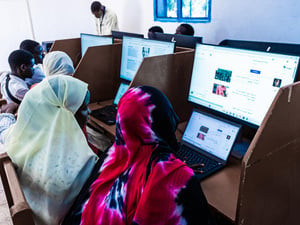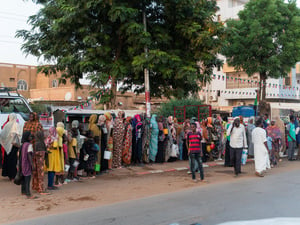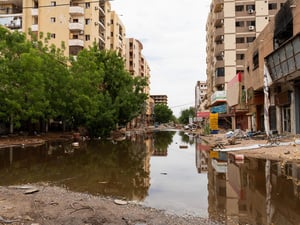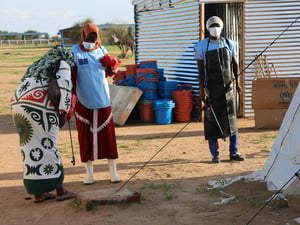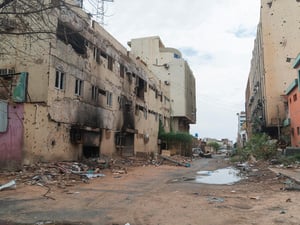UNHCR opens new camp for Chadian refugees in Darfur
UNHCR opens new camp for Chadian refugees in Darfur
UNHCR moved nearly 500 Chadian refugees yesterday (Thursday) from unsafe areas along the Chad-Sudan border to a new refugee camp at Um Shalaya, in Sudan's far western region of West Darfur.
The refugees had settled temporarily in Habila, some 95 km south of the West Darfur capital of El Geneina. Of the estimated 5,000 refugees in Habila, 3,700 have told us they want to be relocated to the new camp at Um Shalaya, south-east of El Geneina, which can receive 10,000 people. Priority will be given to some of the recent arrivals, particularly children, who are suffering the ill effects of not getting enough to eat. Some 3,000 of the refugees at Habila are living in a wadi, or dry riverbed, with no clean water, no sanitation and no proper shelter.
Since the beginning of this year, some 13,000 Chadians have fled military and bandit activity along the border between Chad and Sudan and have taken refuge inside Sudan.
Yesterday's convoy transported precisely 494 Chadian refugees of Daju ethnicity in eight passenger trucks and one bus. Three additional trucks carried the refugees' possession and four trucks carried their donkeys. The convoy left some three hours late because of recalcitrant donkeys that refused to board the trucks.
The African Union provided a military escort for the journey, which took six hours to cover 60 km. We are working together with the International Organization of Migration to transport refugees from their border locations to the new camp. We plan to move about 1,500 refugees per week to the camp in three separate convoys of about 500 people each.
The site for the Um Shalaya refugee camp was identified in collaboration with the Government of Sudan and is about 20 km north-east of Mornei, one of West Darfur's largest camps for internally displaced people. Upon arrival in the camp, refugees are registered by UNHCR and Sudan's Committee for Refugees. They receive kits to construct individual shelters, which should take two to three days. They also receive enough food to last them one month. The camp has high-standard drinking water and a health clinic. Communal latrines have already been excavated in the transit area as well as the areas where refugees will construct their own homes.
In the camp, refugees are being allowed to group themselves, based on family and ethnic preferences; they are assigned plots in blocks of 12 households. The majority of these refugees are of Daju ethnicity, while others are Burgo and of Arab descent.
In addition to the refugees in Habila, there are some 6,000 to 8,000 refugees in the border area of Gelu, approximately 30 km north-west of El Geneina, spread among five makeshift camps and 25 host communities. We plan to begin moving these refugees in two or three weeks, but we expect only about 30 percent of them will want to go to the camp because most of them are staying with relatives or fellow tribe members.
We have received reports of new arrivals - perhaps as many as 7,000 people in total - in border areas, but we have not been able to reach them yet because of continuing insecurity along the border.


